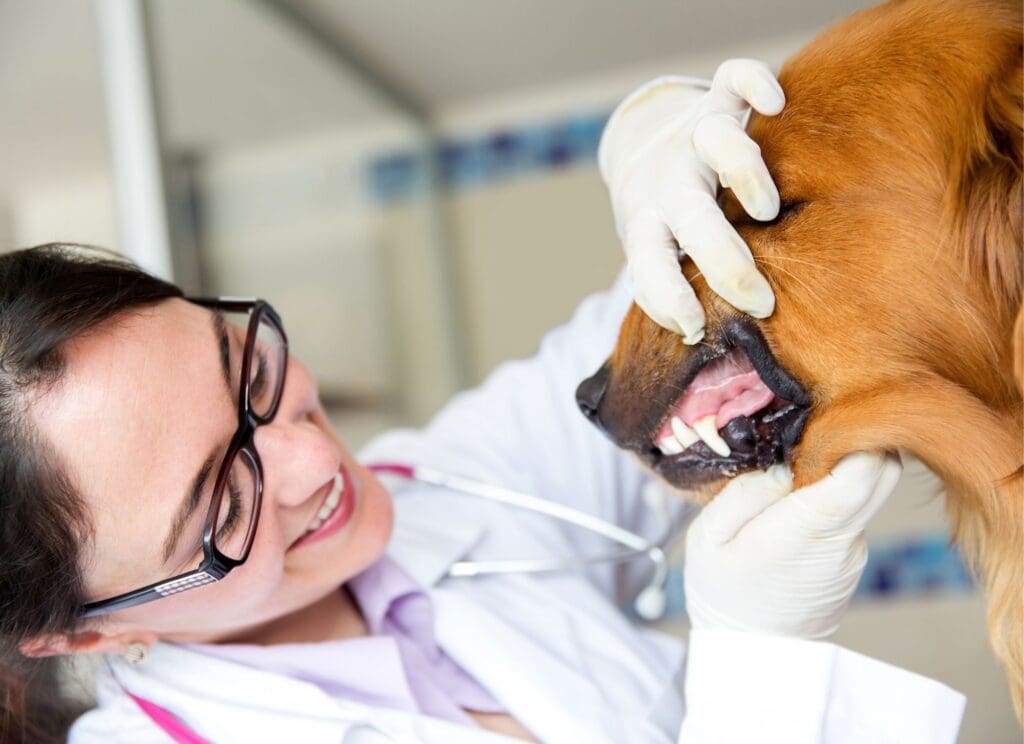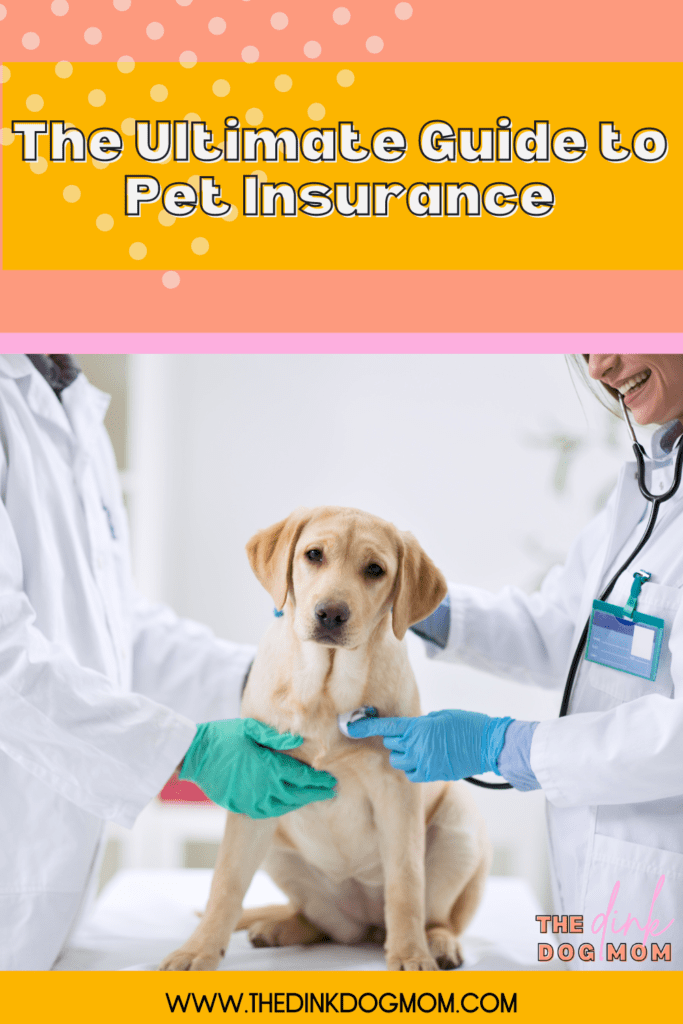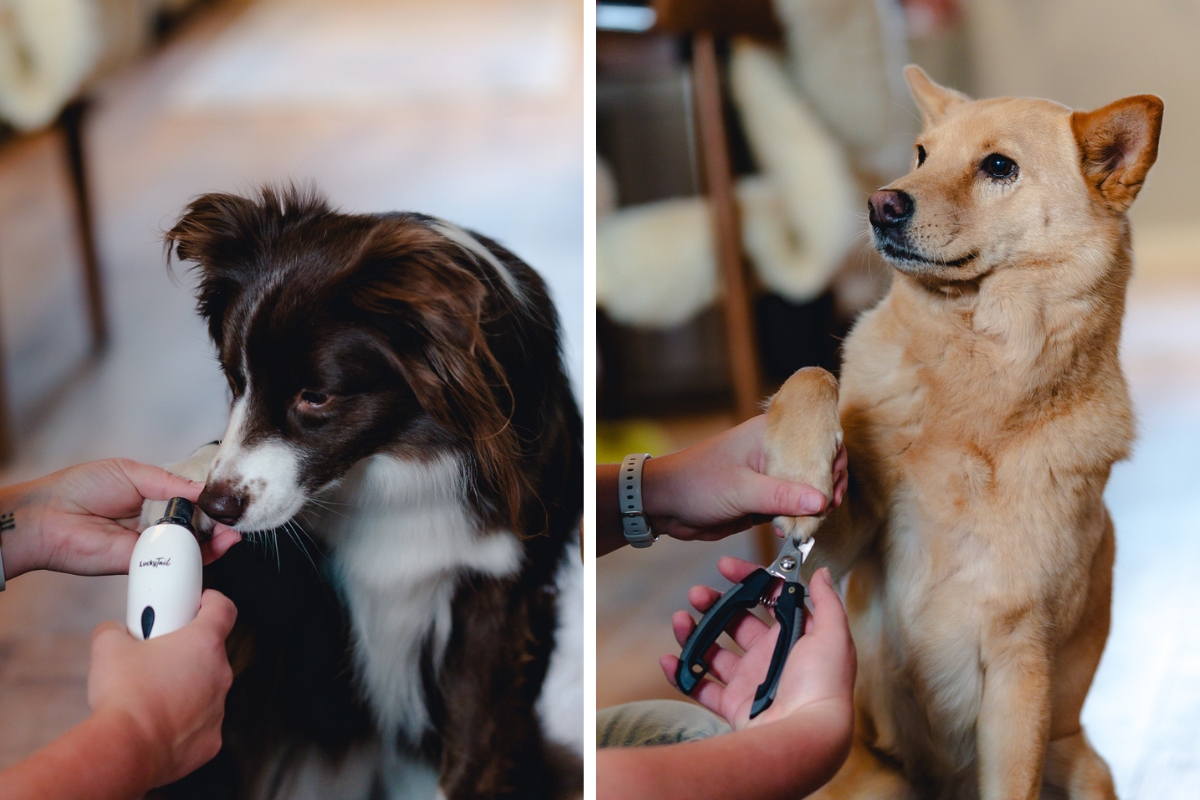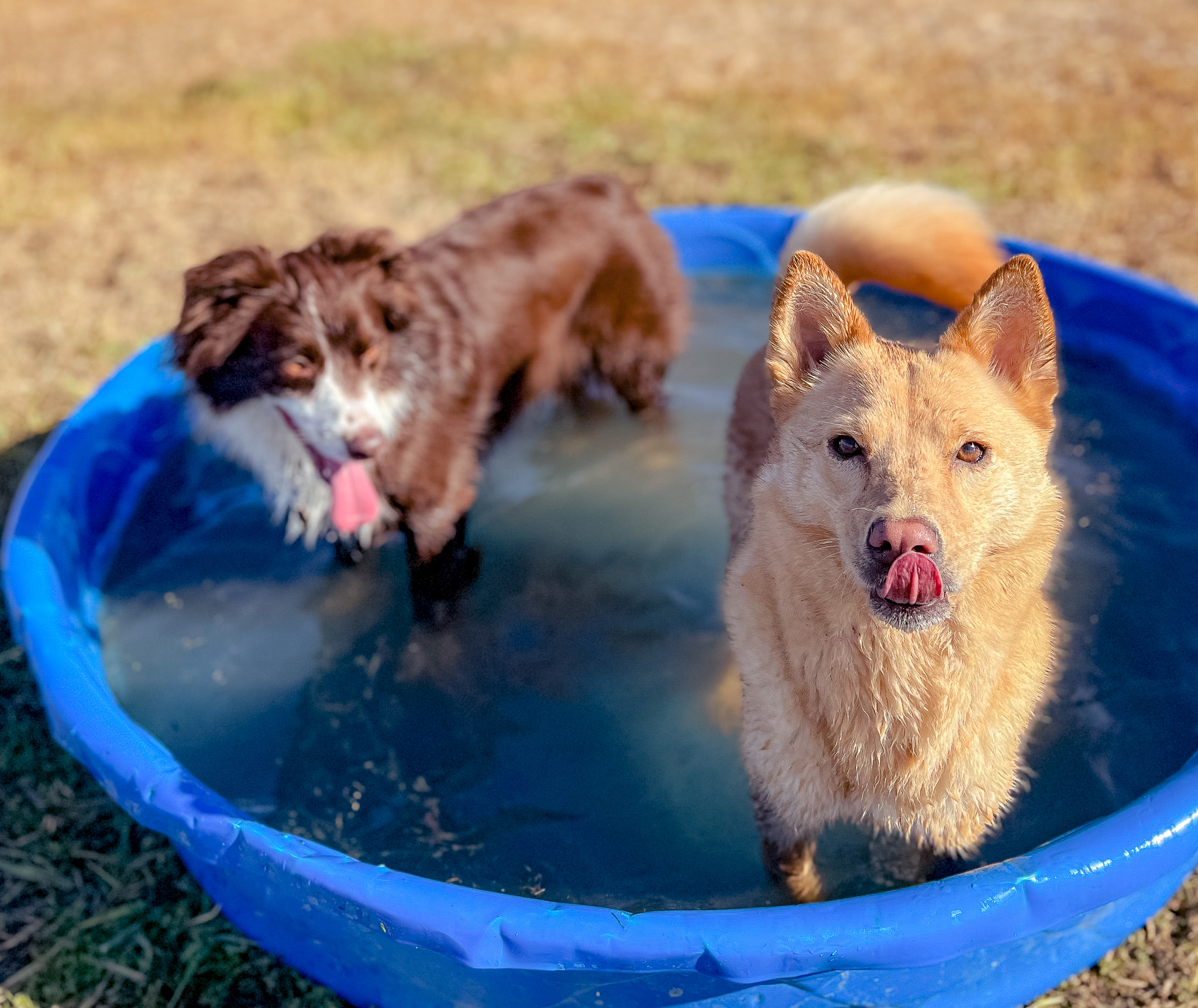Is pet insurance worth it? That’s the big question. When I adopted Mia ten years ago, my answer to that question was no. Coverage and options were limited. Today, however, pet insurance for your dog is a smart move. There are numerous brands out there, with lots of coverage customization to fit your needs and your budget. Insurance for your dog is worth it, because it protects you against expensive vet bills that can quickly stack up in the wake of a major illness or accident.
Recently, I decided to get pet insurance for June and Margot while they were young and healthy. This led me down a rabbit hole of research with an overwhelming amount of information to sort through. I had a ton of questions like:
What does pet insurance actually cover? What pet insurance brand is the best? And, how does pet insurance actually work?
I compiled everything I learned into this ultimate guide to pet insurance to help other pet parents make an informed decision. And, this is a two-part post! In my next post, I take a deep dive on some of the top pet insurance brands to help you easily compare policies and coverage options. While this guide is intended to help you understand pet insurance in general, part two will be a detailed comparison between brands so you can find the right fit for you and your dog.
Support My Work
Please note, I was not paid or compensated in any way for this article. If you find this post helpful, please consider suporting my blog with a donation. Any amount is greatly appreciated! Thank you!
What is Pet Insurance?
Pet insurance protects you financially against accidents and illnesses. Sadly, these are bound to happen at some point in your dog’s life, whether it’s something small (ear infection) or something catastrophic (getting hit by a car). After reviewing numerous pet insurance brands, here are the things most pet insurances cover, excluding pre-existing conditions:
- Diagnostics
- Blood tests
- Urinalysis
- X-Rays
- MRIs
- Labs
- CT scans
- Ultrasounds
- Procedures
- Outpatient
- Specialty/Emergency care
- Hospitalization
- Surgery
- Medication
- Prescriptions
- Injections/Medicines
- Broken Bones
- Cruciate ligament repair
- Dysplasia treatment
This list is your basic pet insurance coverage. Every brand I researched covered diagnostics, treatments, procedures, and medication for accidents and illnesses. Additionally, every brand I researched covered genetic conditions like hip dysplasia and congential conditions like cherry eye, even though the language around this coverage was always, “Unlike other brands, we cover this.” This must be a marketing tactic, because I did not find a brand of pet insurance that did not cover these things.
The only exceptions to this are pre-existing conditions and sometimes bilateral conditions.
Pre-existing conditions are basically anything on your dog’s vet records before you purchase pet insurance, or that happen during your waiting periods (which can be anywhere between a few days up to a year for orthopedic issues). For example, if your dog has allergies before you get pet insurance, their treatment related to allergies will not be covered. Some insurance plans will drop a pre-existing condition if it has been “cured” for a certain length of time. So, if your dog had allergies as a pre-existing condition, but then does not show symptoms for 12 months, the allergies are no longer considered a pre-existing condition. This varies by pet insurance brand!
Bilateral conditions are a type of pre-existing condition that refers to a medical condition that can happen on both sides of the body. For example, if your dog tore their ACL in their left leg before pet insurance, many insurance brands will not cover a torn ACL should it happen on their right leg, as this would be considered a bilateral condition. Again, this varies by pet insurance brand.
What else does Pet Insurance Cover?
While the above list outlines your basic coverage under any pet insurance brand, lots of insurance companies offer additional coverage. Sometimes, this comes at an extra cost; sometimes, it is included in the basic plan. These additional areas of coverage include things like:
- Admin Fees
- Office/Exam fees
- Waste disposal fee
- Rehabilitation
- Physical Therapy
- Hydrotherapy
- Cold Laser treatments
- Mobility devices, like wheelchairs
- Alternative Medicine
- Acupuncture
- Chiropracty
- Vet prescribed supplements/dog food
- End of Life Care
- Euthanasia
- Cremation
- Memorialization
Of course, all of these coverage areas are great, but they are not necessarily important for you and your dog. Chiropractic care might be something you literally never need if you have a couch potato lap dog. And, although end of life care isn’t cheap, it’s also not break-the-bank expensive; Totes’ final vet visit, including euthanasia, cremation, and the memorial items like his paw print, was a little over $500.
Of course, all of these coverage areas are great, but they are not necessarily important for you and your dog.
One thing to really consider is whether or not vet exam/office fees are included. These fees are charged by a vet just for examining your dog. Some insurance companies cover the exam fee, others don’t. Some offer exam fee coverage as an add-on option for an extra cost. Whether or not you want pet insurance to cover an exam fee is up to you. In my experience, exam fees aren’t the expensive part of a vet bill. In fact, my vets have frequently waived exam fees, depending on what care was provided. At the same time, these fees can add up for chronic conditions or an emergency vet visit.
Lastly, I do think rehabilitation is an important coverage area, as physical therapy is not uncommon and can be expensive. Also, services like cold laser therapy and mobility devices are very helpful for common conditions like arthritis and dysplasia.
While many companies will cover the treatment of an accident, not all companies cover the recovery from an accident. For example, if your dog breaks a leg, pet insurance will cover the treatment of that injury: setting the leg, the cast, any surgery required, and so on. But not every company will cover the physical therapy to help your dog heal from the accident.
Preventative/Wellness Plans
Many pet insurance brands offer a Preventative/Wellness add-on option. This means that for an additional fee, your wellness/preventative care, such as annual vet visits and vaccinations, are covered. Although this sounds great in theory, most of these plans are not worth it. For one, many of these plans have coverage limits. For example, they will only pay a maximum of $100 for a dental cleaning, but the average cost of a dental cleaning is $300 to $700. Secondly, they often end up costing more per year than you would spend on routine wellness care. Based on my own research, testimonials I’ve read, and feedback I’ve gotten from pet parents on social media, most people aren’t happy with their wellness plans.
Before purchasing this add on, I would calculate how much you spend on wellness visits and preventatives per year. Then, compare those numbers to the maximum limits for a wellness plan and the annual cost.
A better option is to set aside a small amount of money each month into a savings account. This helps you budget for routine wellness care, plus you can recoup whatever you don’t spend. With a wellness/preventative add on, you lose whatever you don’t spend.
Why Get Pet Insurance?

Pet insurance works more like car insurance than human insurance. Car insurance doesn’t cover your maintenance, but it’s there to help if something big happens, like a car accident. Similary, pet insurance usually doesn’t cover preventative care. Instead, it helps with accidents and illnesses:
- Broken bones and cruciate ligament injuries like torn ACLs
- Cancer treatments
- Chronic issues like allergies or IBS
- Emergency surgery for ingesting a foreign object
- And smaller things, like diarrhea, UTI diagnostics and treatments, ear infections, etc.
Unlike routine wellness care, which is roughly the same cost each year and something you can save/prepare for, accidents and illnesses can add up quickly to an enormous vet bill. Sometimes, pet parents literally cannot afford the emergency care their pet requires.
ACL surgeries, for example, can cost on average up to $5,000 for one knee. An intestinal blockage can set you back $7,000 on average. Cancer treatments can cost upwards of $25,000! Even smaller issues, like an upset stomach, can cost hundreds of dollars by the time you add in vet exam fees, diagnostics, labs, and prescriptions. While you can certainly put these charges on a personal credit card or opt for something like Care Credit, you still have to foot the bill. Pet insurance is the only way to avoid having to cover the costs of these emergencies.
Do I need insurance if my dog is healthy?
Yes! According to this CNBC article, 1-in-3 pets need emergency veterinary treatment every year! The top reasons that pets wind up in the E.R. are all unexpected accidents: gastrointenstinal upset (vomitting and diarrhea), getting hit by a car, ingesting a foreign object, and so on. According to the American Veterinary Medical Association, roughly 1 in 4 dogs will, at some stage in their life, develop neoplasia (the uncontrolled, abnormal growth of cells or tissues in the body) and almost half of dogs over the age of 10 will develop cancer. Just because your dog is healthy now does not mean accidents and illnesses can’t happen, so it’s worth being prepared!
My dog is older/has a pre-existing condition. Is pet insurance still worth it?
Yes! Unless your dog is at the end of their life, pet insurance is worth it. Even with pre-existing conditions, a cheaper plan ($25-$30 per month) can be worth it in the face of a major accident like a broken bone or emergency surgery to remove an obstruction.
When is pet insurance not worth it?
After conducting my own research, my opinion is that pet insurance may not be worth it if 1. your dog has a lot of pre-existing conditions, or 2. is at the end of their life.
If your dog is nearing the end of their life, and a major accident or illness would degrade their quality of life too much, then pet insurance probably won’t do much for you. Similarly, if your dog already has cancer, and has a repaired ACL (a bilateral condition), and has hip dysplasia, and has already been diagnosed with dental disease, then you might find pet insurance coverage limited.
That said, if your dog only has one major pre-existing condition (like a repaired ACL), I would still opt for a basic pet insurance plan. This way, you are protected against other major accidents and illnesses that can and do happen to your dog.
What is the Best Pet Insurance?
When I first started researching dog insurance, I expected to find a company that was “the best choice.” Instead, I learned that the best choice is the choice that fits your dog, your lifestyle, and your budget. That varies from person to person, dog to dog, and it means there is no one “best choice” out there. When shopping for pet insurance, it’s important to consider your dog, their pre-existing conditions, their age, and their overall lifestyle. Then, it boils down to budget: what can you afford to pay monthly (AKA your premium), and what can you afford to pay out of pocket for treatment (AKA your deductible).
How to Choose a Pet Insurance
If your dog is high energy, plays hard, and/or competes in dog sports, then a plan with solid orthopedic coverage should be a priority. This goes beyond just a cruciate ligament repair to include rehabilitative care like hydrotherapy, physical therapy, and so on. Chiropractic care and/or acupuncture might also be important to you in order to help keep your dog in tip top athletic shape!
The best choice is the choice that fits your dog, your lifestyle, and your budget. That varies from person to person, dog to dog, and it means there is no one “best choice” out there.
Alternatively, perhaps you just adopted a small dog like a Chi mix. Small dogs are notorious for poor dental health, so finding a plan with solid dental coverage would be important! On the flip side, if your dog has already been diagnosed with dental disease and is in need of a tooth extraction, this might not matter so much since it would become a pre-existing condition.
You can see how quickly choosing the right plan becomes muddled and confusing. A good place to start is to make a list of possible pre-existing conditions your dog has and any issues you are concerned about for the future. Then, revisit your budget: what can you afford monthly (your premium), and what can you afford to pay upfront for a treatment (your deductible).
Once you have this information collected, you’ll have a clearer picture of what you need. Remember, all pet insurances cover the big stuff, like major accidents and illnesses. So, choosing a company is about what fits your/your dog’s specific needs/concerns.
Customizing your Pet Insurance
Another reason pet insurance can be confusing is because there are a ton of customization options. Some companies just cover “everything” and don’t have add-on options. Others start off very basic (and super affordable), with the option to add on a lot of additional coverage. Lastly, your deductibles, max payouts, and percent paid can be customized, with each one affecting your premium. Think of your premium as your subscription fee to pet insurance; this is most often paid monthly, but you can sometimes opt to pay this annually, usually at a discount.
Deductibles
A deductible is how much you will pay out of pocket before your pet insurance kicks in. Most pet insurances have an annual deductible, but some have a deductible per condition/visit. This number can range from $200 up to $700. Although a low deductible is great, it will also increase your monthly premium. Consider what you would be comfortable paying out of pocket for a vet visit. If you can (relatively) easily cover a $500 vet bill, then a $500 deductible could be a good choice that saves you a little money each month.
Max Payouts
A max payout is the maximum amount a pet insurance will pay out. The higher max payout you select, the higher your premium will be. Most pet insurances have annual limits for max payouts, but some may have a lifetime limit. This means once you hit it, the pet insurance won’t cover anything else…ever. A max payout can vary from as low as $3,000 up to unlimited. Based on my research, $10,000 is a sweet spot on average. Most emergencies won’t exceed $10,000, so if your budget is limited, or your dog has some pre-existing conditions, a lower payout makes sense.
Percentage Paid
The percentage paid is how much of the vet bill a pet insurance company will cover. Most brands range between 70-90%, with some offering up to 100%. The higher percentage paid you select, the higher your premium will be. Consider how much you can afford for a vet bill on top of your deductible. If your dog required a $5,000 surgery, a 70% payout would mean you cover $1500 after meeting your deductible. A 90% payout would mean you only cover $500 after meeting your deductible.
Other Things to Consider When Choosing Pet Insurance For Your Dog
In addition to the customization options above, there are other factors to consider when choosing the best pet insurance for your dog. How the insurance works (reimbursement versus direct pay) and how claims are processed are both really important to consider. Additionally, many insurances have discount options for multipe pets or bundling insurance plans (like renter’s insurance and pet insurance). There are also a ton of add-on options out there, from coverage for lost pet costs (including rewards) to coverage for vacation cancellation due to a pet emergency. Lastly, it is important to know how easy it is to upgrade, downgrade, or cancel your policy.
Reimbursement Vs Direct Vet Pay
Most pet insurances are reimbursement plans, though some do offer direct vet pay with a little upfront planning. This means you pay the vet bill upfront, then submit an invoice to your insurance company, which processes your claim and sends you a reimbursement. Processing time can vary between a couple of days to a couple of weeks. Some pet insurance companies have easier submission processes than others, including direct deposits for reimbursements (as opposed to mailed checks) and their own apps where you can submit a photo of your invoice and track your claim.
Some brands offer direct vet pay, meaning they pay your vet directly. The only caveat here is you must select a vet that accepts your pet insurance. While many vets do accept pet insurance, this can limit who you can turn to in an emergency situation.
Lastly, a few brands offer the option to pay a vet directly with a little upfront preparation. For example, if your dog needs surgery to repair their ACL, you can submit a quote to your insurance company in advance for processing. If approved, and if your vet accepts your pet insurance, then your insurance company will pay your vet directly.
Discounts and Bundling Options
If you have multiple pets, finding an insurance that offers a multi-pet discount can be helpful. Many companies offer multi-pet discounts ranging from 5-10% off each additional pet insured. This may not sound like much, but it does shave a decent amount off your monthly premium.
Another thing to consider is insurance bundles. If you already use an insurance like Lemonade for renter’s insurance, you can often bundle your insurances for an additional discount! Again, these discounts are small, but they are helpful! Plus, you become a more valued customer if you have bundled insurance.
Add Ons
Add-on options vary wildly between companies. What some insurance brands cover as part of their base plan, others have as an add on. This makes it hard to directly compare plans. Some add ons are pretty basic, like covering vet exam fees. Others are more niche, like covering vacation cancellation due to a pet emergency. Here is a list of the most common add ons I found:
- Exam fees
- Lost Pet Advertising and Reward
- Vacation Cancellation
- Virtual Visits
This additional coverage is usually bundled, not a la cart. So, while they do increase your premium, they aren’t wildly expensive. However, remember that this coverage goes towards your max payout. So, if your $5,000 vacation gets cancelled due to a pet emergency that costs $7,000, but your max payout is $10,000… well, you can do the math 😊.
Changing or Cancelling your Plan
Last, but not least, be sure to read the fine print around your pet insurance plan’s policy for upgrading your plan, downgrading your plan, and cancelling your plan. For the most part, you can downgrade your plan without issue. However, many pet insurance companies are not flexible with upgrading your plan, or increasing your coverage. In fact, many brands treat an upgrade like a new policy. This means any care your pet received under your plan previously will be considered a pre-existing condition.
Most plans I researched allowed for cancellation at any time, though several did not explicitly state this. Keep in mind, if you paid an annual premium, this may not be reimbursed. To cancel a plan, you typically have to submit a request in writing. And, of course, if you go back to this brand later, any condition your dog was treated for previously becomes a pre-existing condition.
Major Takeaways When Thinking About Pet Insurance


Choosing a pet insurance is hard. There is a ton of information to digest, and it can be overwhelming. Moreover, there is not much room for error. Changing policies or upgrading your policy can be difficult, particularly if you’ve filed a claim, as that particular illness or injury would be considered a pre-existing condition.
That said, there are a lot of good choices out there! If I were to distill all of this information down into a few key points, it would be these:
- Pet insurance is a smart choice, even if your dog has pre-existing conditions. There are plenty of ways your dog might get hurt or sick, and it’s important to be prepared. At the very least, you can get basic coverage for catastrophic accidents/illnesses.
- Know how pet insurance works, especially as you hone in on a brand. Understand how claims are processed, what is considered a pre-existing condition, and what is or is not covered. Websites are not always specific, so reach out to companies directly with your questions.
- More coverage is not necessarily the best choice. You are not reimbursed for your premiums, even if you never make a claim. Balance what you can/want to afford monthly with what you know you would need in an emergency situation.
I hope this guide helps you feel more informed about pet insurance! Stay tuned for part two, where I take a deep dive on some of the top pet insurance brands!
Did you find this post helpful? Consider supporting my blog by making a donation! Any amount helps compensate me for my time and energy researching, writing, and promoting this content. Thanks so much for being here!








One Response